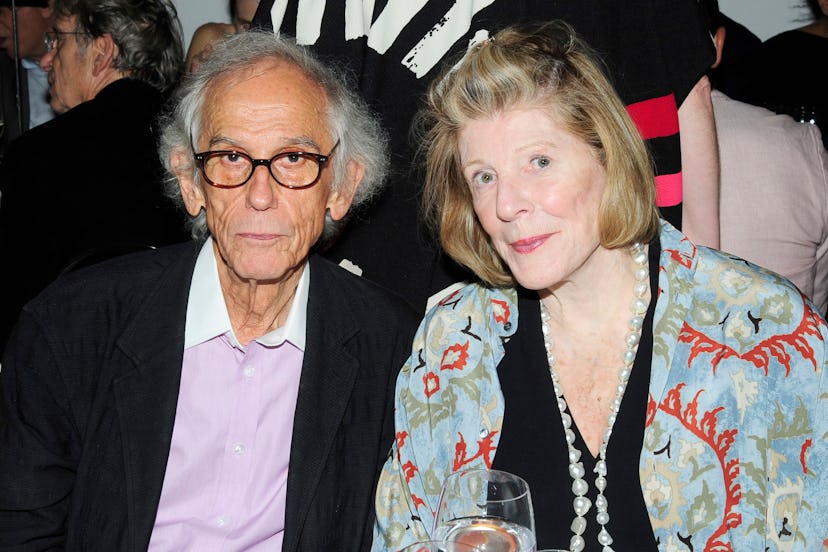With Ava DuVernay’s Blessing, Agnes Gund Says Now Is “the Time” to Reform America’s Criminal Justice System
The philanthropist and chairman of MoMA PS1’s Board of Directors is going full steam ahead with her latest venture, the Art for Justice Fund.

On Tuesday night, before MoMA PS1 kicked off its annual benefit gala, this year honoring artists Hank Willis Thomas and Carolee Schneemann, the museum’s director Klaus Biesenbach and the likes of Michael Stipe lingered outdoors for cocktails and a serenade from a trumpet player in a sequined blazer just outside the Museum of Modern Art’s Agnes Gund Garden. Its namesake, however, was nowhere to be found: Gund, the chairman of the PS1 Board of Directors, former president of MoMA, and noted art collector and philanthropist, was instead already holed up at a table inside, swiping through iPhone photos of children’s artworks she’d managed to get framed and showcased on the walls of Christie’s over the next two nights, just a few blocks south.
“It’s wonderful, isn’t it?” Gund asked, explaining with great modesty how her nonprofit Studio in the School, which gets working artists to teach art classes to underserved public schools, has reached nearly a million children in New York, 90 percent of whom have been low-income.
Gund’s philanthropy has only grown more ambitious recently. Earlier this year, Gund sold a prized $165 million Roy Lichtenstein painting, which had been hanging above the mantlepiece in her Park Avenue home, in order to start the Art for Justice Fund, a partnership with the Ford Foundation that benefits groups working on criminal justice reform. “Six of my 12 grandchildren are black,” said Gund, 78. “Since I figured I wouldn’t live that much longer, I wanted to do this before I died.”
Thelma Golden, Agnes Gund, and Klaus Biesenbach at the 2017 MoMA PS1 benefit gala at the Museum of Modern Art.
Race is an unavoidable part of the issue: One in three male black children is now expected to eventually end up incarcerated in America, a country that is home to 5 percent of the world’s population but 25 percent of its prisoners. These are statistics Gund is by now well-versed in; it was Michelle Alexander’s book The New Jim Crow: Mass Incarceration in the Age of Colorblindness, not to mention 13th, Ava DuVernay‘s documentary on race and mass incarceration, that informed her philanthropy.
They are issues that Gund has been discussing since the ’80s with her philanthropic advisor, Sonia Lopez, though “at no point” did Gund think she’d “end up following through” on taking things into her own hands until last year, when she saw DuVernay’s film. “It was the most dramatic thing I’d seen on incarceration, and especially blacks that are incarcerated,” Gund said. “After seeing the opening at Film Forum, I went home and decided that this is what I had to do.”
After meeting with Gund at her Upper East Side apartment, DuVernay tweeted her gratitude for her attention to an issue that philanthropy has so far largely overlooked, and which is now finally entering the mainstream consciousness. A few days later, Jay-Z published an op-ed in Time that addressed the state of America’s broken criminal justice system. It was a rare instance of the issue of mass incarceration being pushed into the public spotlight, but to Gund—who immediately got over two dozen previously uninterested art collectors to pledge their support for her fund—that comes as no surprise. “I was lucky, because it seems to be the time people want to be into it and do something,” she said.
“The [political] climate is much more conducive now to working on this, even if people are not necessarily for criminal justice or social justice,” Gund continued, citing today’s “lack of liberalism.” “People are much more able to see the real picture of what’s happening in the world.”
Gund, for her part, has taken care to diversify the staffs of both MoMA and PS1 for decades, and considers the latter to already be a part of her efforts in addressing mass incarceration, thanks to exhibitions like “Taryn Simon: The Innocents,” which featured the artist’s photos of the unfairly and falsely convicted.
For now, though, it was time to tuck into dinner with Schneemann, Christo, and Louise Lawler, the artist whose retrospective was hanging a few floors up in the museum—and whose own battlecry for diversity, the landmark 1972–1981 sound piece Birdcalls, could, come morning, be heard softly resonating throughout the museum’s Agnes Gund Garden.
Related: Could This $165 Million Roy Lichtenstein Painting Help Reform America’s Criminal Justice System?
See Kendall Jenner, Performance Artist, Channel Icons Like Marina Abramovic and Yoko Ono: